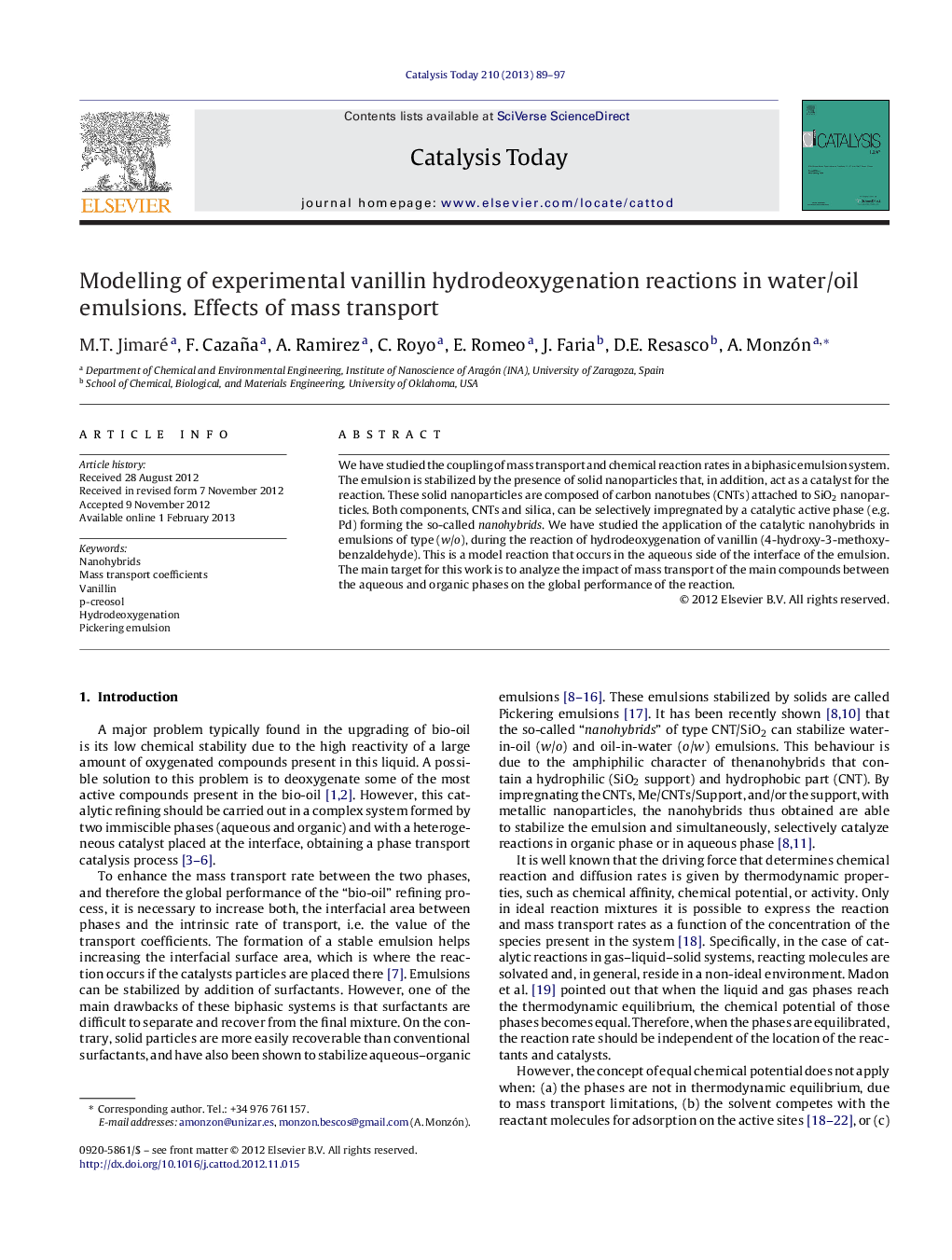| Article ID | Journal | Published Year | Pages | File Type |
|---|---|---|---|---|
| 54956 | Catalysis Today | 2013 | 9 Pages |
We have studied the coupling of mass transport and chemical reaction rates in a biphasic emulsion system. The emulsion is stabilized by the presence of solid nanoparticles that, in addition, act as a catalyst for the reaction. These solid nanoparticles are composed of carbon nanotubes (CNTs) attached to SiO2 nanoparticles. Both components, CNTs and silica, can be selectively impregnated by a catalytic active phase (e.g. Pd) forming the so-called nanohybrids. We have studied the application of the catalytic nanohybrids in emulsions of type (w/o), during the reaction of hydrodeoxygenation of vanillin (4-hydroxy-3-methoxy-benzaldehyde). This is a model reaction that occurs in the aqueous side of the interface of the emulsion. The main target for this work is to analyze the impact of mass transport of the main compounds between the aqueous and organic phases on the global performance of the reaction.
Graphical abstractFigure optionsDownload full-size imageDownload high-quality image (131 K)Download as PowerPoint slideHighlights► Stable emulsions formed with solid particles increase global mass transfer coefficients due to the growth of the interfacial area. ► The increase of mass transfer rate improves the observed reaction rate. ► Transference between the phases of the formed products enhances the global selectivity of the reaction. ► Nanohybrids can simultaneously stabilize emulsions and catalyse the desired reaction in the selected phase.
